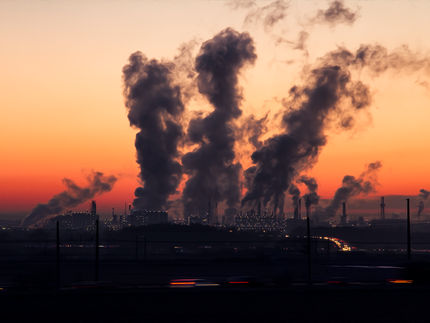Thermo-Optical Measuring method (TOM) could save several million tons of CO2 in coal-fired plants
Coal-fired plants as alternative energy source to nuclear power are essential for ensuring the energy supply. But due to the high CO2 emission their combustion process requires optimization. In various projects the Center of Device Development CeDeD of Fraunhofer Institute for Silicate Research ISC could improve the combustion process to reduce large amounts of CO2 and save energy.

Image shows inside of furnace while heating up brown coal rest slag at 1100 °C.
Fraunhofer ISC
On account of the energy turn and the turn away from the nuclear energy, alternative energy sources win more and more in meaning. However, the electricity supply cannot be provided by these energy sources only, the customary energy sources on fossil base come to the fore again. Mineral oil, natural gas as well as coal count to it basically. Unfortunately, due to CO2 emission they are much more detrimental to the environment and humans.
With the Paris agreement on the reduction of climate change by the end of 2015, 195 states decided to push forward the international climate protection and to reduce the global greenhouse gas emissions drastically. The global warming should not be higher than 2 °C, better yet 1.5 °C above pre-industrial level. Coal-fired plants have a high CO2 emission and show great impact on the environment and the climate. In many projects, Dr. Andreas Diegeler, head of CeDeD, and his team were able to show an enormous reduction of CO2 emissions in coal-fired plants.
In order to optimize the process and to reduce CO2 emission the scientists had to characterize and analyze the combustion process and the combustion products. Also the handling and utilization of the waste materials, especially the waste slag, is one of the most important focus points due to the development of new technologies. For this purpose CeDeD used the Thermo-Optical Measuring method (TOM), a development of Fraunhofer ISC that optimizes the heat treatment of materials. The TOM's procedures are used with the cooperation partners in the area of combustion process and their optimization within capability to measure the combustion products in situ and their reaction with co-products (additive gases). Additionally, the characterization of slag assessment and fuel processes gets to win knowledge about the running off process and their optimization possibilities in the lab graduation.
TOM is designed for in situ characterization of materials within each kind of heat treatment under variable conditions. Main part of the measuring system is a furnace which can be equipped with different heating insets, depending on which test material, which surrounding atmosphere and at which temperature the investigations should be carried out. The system can be driven under controlled atmosphere from room temperature up to extremely high temperature of 2400 °C. To be able to evaluate the behavior of the coal, openings which are equipped with view windows are right on both sides of the furnace along a horizontal axis. Besides, the left view window is used as an illumination opening, the right view window as an observation window. On the side of the observation window a CMOS camera with special optics and filters is positioned. On the left side a strong source of light, a LED-Array with 100W and 3000 lm, illuminates the inner area of the furnace along the optical axis. The test material, coal e.g. will be placed in the optical axis in the center of the furnace. With this configuration the contour change of the test material during the heat treatment can be observed by picture analysis with a resolution up to 0.3 µm. In addition an IR spectrometer or a gas chromatograph can be connected to the inner area of the furnace to detect the combustion gases. The system is able to control the atmosphere during the heat treatment. With this feature additive gases can join the combustion process. The influence and reaction will be observed in situ and simultaneously.
With this data the team of CeDeD could adapt and optimize the heating process to increase the efficiency and reduce the emission of undesirable gas products, respectively to minimize the CO2 emission.
In the case of lignite coal-fired power plant the furnace cleaning process was been optimized in the blast furnace by lowering the temperature and adding additive gases. With this improvement a reduction of CO2 emission of around 10% was achieved which leads to nearly 900 gram per kWh instead of around 1000 gram per kWh with a standard process. To understand this progress we look to a modern lignite coal power plant with a capacity of 4 GW electrical power output. An amount of over 30 million tons of coal per year is needed to produce around 30 TWh electrical energy. This results in a CO2 reduction of 3 million tons per year.
Other news from the department manufacturing
These products might interest you
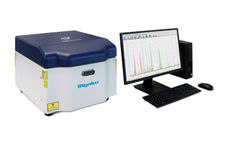
NEX CG II by Applied Rigaku Technologies
Elemental analysis at ppb level for exact results
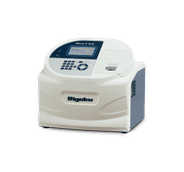
Micro-Z ULS by Rigaku
Accurately measure sulphur content in fuels: WDXRF analyser
Reliable routine analyses with 0.3 ppm detection limit and compact design

NANOPHOX CS by Sympatec
Particle size analysis in the nano range: Analyzing high concentrations with ease
Reliable results without time-consuming sample preparation

Agera by HunterLab Europe
Save Valuable Time: Color and Gloss Measurement in Record Time
Capture the Color Impression of the Sample Exactly as the Human Eye Perceives It
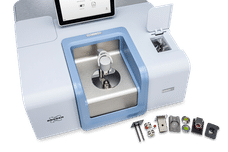
INVENIO by Bruker
FT-IR spectrometer of the future: INVENIO
Freely upgradeable and configurable FT-IR spectrometer
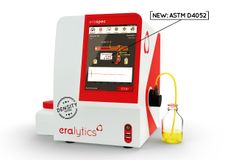
ERASPEC by eralytics
Spectral Fuel Analysis in Seconds with ERASPEC
Fast delivery of over 40 fuel parameters at the push of a button

SPECORD PLUS by Analytik Jena
SPECORD PLUS Series - Maximum precision in UV/Vis
The modern classic guarantees the highest quality
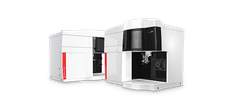
PlasmaQuant 9100 by Analytik Jena
PlasmaQuant 9100 Series of ICP-OES Instruments
Reveal the Details That Matter
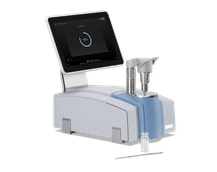
ALPHA II by Bruker
Chemical analysis made easy: compact FT-IR system
Increase the efficiency of your routine analyses with user-friendly technology

ZEEnit by Analytik Jena
Zeeman Technology for Maximum Sensitivity – Matching any Analytical Problem
Transverse-heated graphite furnace for optimum atomization conditions and high sample throughput

contrAA 800 by Analytik Jena
contrAA 800 Series – Atomic Absorption. Redefined
The best of classical atomic absorption and ICP-OES spectrometry are combined in the contrAA 800

Microspectrometer by Hamamatsu Photonics
Ultra-compact microspectrometer for versatile applications
Precise Raman, UV/VIS and NIR measurements in portable devices

S2 PICOFOX by Bruker
Fast and precise trace element analysis on the move
TXRF technology for minimal samples and maximum efficiency
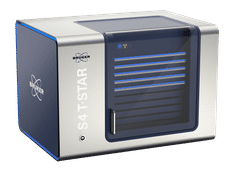
S4 T-STAR by Bruker
TXRF spectrometer: Sub-ppb detection limits & 24/7 analytics
Minimal operating costs because no gases, media or lab equipment are required
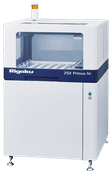
ZSX Primus IVi by Rigaku
High-precision WDXRF analysis for industrial applications
Maximum sensitivity and throughput for light elements and complex samples
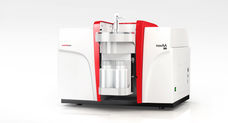
novAA® 800 by Analytik Jena
The Analyzer 4 You - novAA 800-Series
The reliable all-rounder, making routine analysis efficient and cost-effective

PlasmaQuant MS Elite by Analytik Jena
LC-ICP-MS Is the Key to the World of Elemental Species
Highest Sensitivity and Lowest Detection Limits with PlasmaQuant MS Series and PQ LC
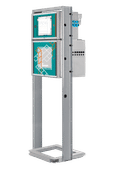
2060 Raman Analyzer by Metrohm
Self-calibrating inline Raman spectrometer
Analyze solids, liquids and gases - for reproducible, accurate results in the process

BIOS ANALYTIQUE - Soluciones de Renting y Leasing para laboratorios by Bios Analytique
Specialists in the rental and leasing of scientific equipment for laboratories throughout Europe
Whether you have an unexpected requirement or limited budget, we have the perfect solution for you

SPECTRO ARCOS by SPECTRO Analytical Instruments
The inductively coupled plasma optical emission spectrometer (ICP-OES) for highest demands
The top-of-line SPECTRO ARCOS ICP-OES analyzer evolves elemental analysis to the next level

Get the chemical industry in your inbox
By submitting this form you agree that LUMITOS AG will send you the newsletter(s) selected above by email. Your data will not be passed on to third parties. Your data will be stored and processed in accordance with our data protection regulations. LUMITOS may contact you by email for the purpose of advertising or market and opinion surveys. You can revoke your consent at any time without giving reasons to LUMITOS AG, Ernst-Augustin-Str. 2, 12489 Berlin, Germany or by e-mail at revoke@lumitos.com with effect for the future. In addition, each email contains a link to unsubscribe from the corresponding newsletter.
Most read news
More news from our other portals
See the theme worlds for related content
Topic world Gas chromatography
Gas chromatography is an essential method in analytical chemistry for the separation and analysis of volatile compounds. Due to its high resolution and sensitivity, it has become firmly established in areas such as environmental analysis, food chemistry or forensic science. GC provides precise and reliable results and enables deep insights into the chemical composition of samples.

Topic world Gas chromatography
Gas chromatography is an essential method in analytical chemistry for the separation and analysis of volatile compounds. Due to its high resolution and sensitivity, it has become firmly established in areas such as environmental analysis, food chemistry or forensic science. GC provides precise and reliable results and enables deep insights into the chemical composition of samples.
Topic World Spectroscopy
Investigation with spectroscopy gives us unique insights into the composition and structure of materials. From UV-Vis spectroscopy to infrared and Raman spectroscopy to fluorescence and atomic absorption spectroscopy, spectroscopy offers us a wide range of analytical techniques to precisely characterize substances. Immerse yourself in the fascinating world of spectroscopy!

Topic World Spectroscopy
Investigation with spectroscopy gives us unique insights into the composition and structure of materials. From UV-Vis spectroscopy to infrared and Raman spectroscopy to fluorescence and atomic absorption spectroscopy, spectroscopy offers us a wide range of analytical techniques to precisely characterize substances. Immerse yourself in the fascinating world of spectroscopy!
